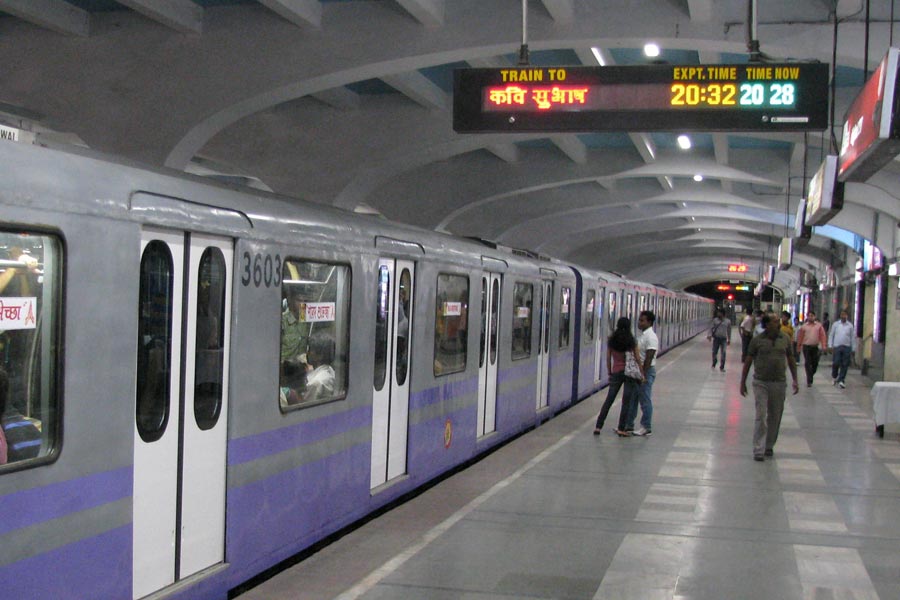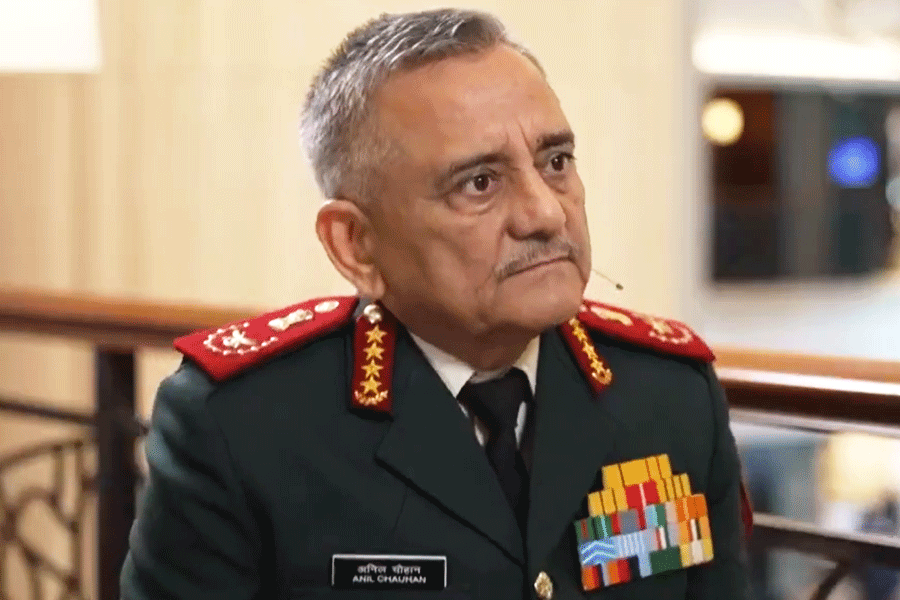

The compactor machines are in place, garbage men have been handing out segregation bags and residents have been asked to separate their waste before dumping. But even months after the corporation began its drive to segregate the township's waste, the project lacks teeth. And the blame, primarily, lies on residents who won't take the directives seriously.
Salt Lake’s garbage has been traditionally piling up in the landfills of Mollar Bheri behind Sector V but the volume — around 100 metric tons of solid waste a day — is so huge that the trash is on the verge of overflowing into the fragile East Calcutta Wetlands that it borders.
As a desperate measure, the corporation has purchased compactor machines, that would compress and shrink the garbage before dumping it in Mollar Bheri. But ideally the trash must be segregated before dumping. Organic waste, such as vegetable peels, would decompose and nourish the soil but plastic, being non-biodegradable, would choke it and batteries would leak harsh chemicals and destroy the ground’s fertility.
This is why the corporation wants garbage segregation and this would be fastest and most effective if waste is segregated at source, ie. by households before being handed over to garbage men.
“We have started handing over garbage bags to households and they have to start filling them with segregated waste. There is a looming threat to their environment and they have to do their bit by working together with the civic body. More bags will be distributed soon,” said mayor-in-council in charge of conservancy Devashis Jana.
Minister for urban development and municipal affairs, Firhad Hakim, said Salt Lake must set an example for the rest of the state. “Salt Lake has always been a model township. Residents must live up to that name. If this project can be implemented in Salt Lake, all other municipalities will follow suit. This will be extended to Rajarhat soon,” he said.


Eco-friendly move
Civic authorities have been trying to spread awareness about the project by distributing leaflets and organising interactive sessions with block committees. They have started by distributing three nylon bags each to a few lanes in GC, FD and HA blocks. Residents are to collect their organic, dry and reject waste in these three bags and empty them into separate containers without throwing away the bag when the garbage man comes knocking.
Organic waste comprises kitchen waste such as vegetable and fruit peels, leftover food, leaves etc. Residents are not to tie these up in plastic bags before dumping. The dry waste bag is to hold plastic, newspapers etc and the third bag is for reject waste like soiled tissues and diapers.
Turning a deaf ear
Sadly residents are yet to comply with the new directives. “This is an added burden. Where is the time to segregate waste at home? Why can't people who collect garbage do it themselves? Mornings are the busiest time of the day. There is not a minute to spare,” said Smita Chokhani, a resident of FD Block.
Shubhi Tandon, also of FD Block, said the move would be inconvenient since she lives on a highrise. “The garbage man doesn’t come up to the upper floors. We simply leave our garbage in plastic bags on the ground floor near the gate for him the collect. I’m not sure how the new system would work out. We have got the segregation bags but haven’t started using them yet.”
Rakesh Arora of GC Block hasn’t seen any neighbour take the trouble yet. “We have got the bags and even leaflets informing us about the drive but haven’t started doing it. I haven’t seen anyone in the neighbourhood do it either. It’s surely going to add to our chores,” he said.
Official word
The garbage men are not too optimistic either. “To date, no one has handed over garbage in separate bags. They still give it jumbled up in plastic bags, which we take to compactors located in HA, BJ, FD blocks and the canalside. The whole lot is shrunk by the machine and taken to Mollar Bheri,” says Biren Das, a garbage collector in GC Block.
Sanjay Das, who collects garbage in FD Block, says he hasn’t come across a single person segregating waste either.
“I have seen the bags being distributed but no household uses them. Unless people take responsibility how can this project be a success? People are educated in this township and know about the threat to the environment. But they won't do anything about it,” complained Sanjib Rout, who is stationed at the compactor junction near Tank No 13.
During the Left regime, the municipality had started a vermicompost plant in Mollar Bheri but it had to be shut after barely six months of operation. “The reason that plant had failed was because it needed organic waste to work. The municipality had deployed teams to segregate waste at the dumping ground but they did not do the job properly and inorganic waste would seep into the mixture. So the output wouldn't be up to the mark,” said a corporation official.
As for strengthening the segregation drive, the authorities are yet to come up with a penalty. “The first step would be to distribute nylon bags to every household. Only then can we try to enforce the rule more effectively,” said Jana. “We have exhausted the bags in the first phase of distribution and will resume when the next lot arrives.”
Vats out
The vats outside housing complexes will be removed soon. “The vats will be replaced by dustbins. The bins will be emptied regularly in order to keep them clean,” said Jana.










